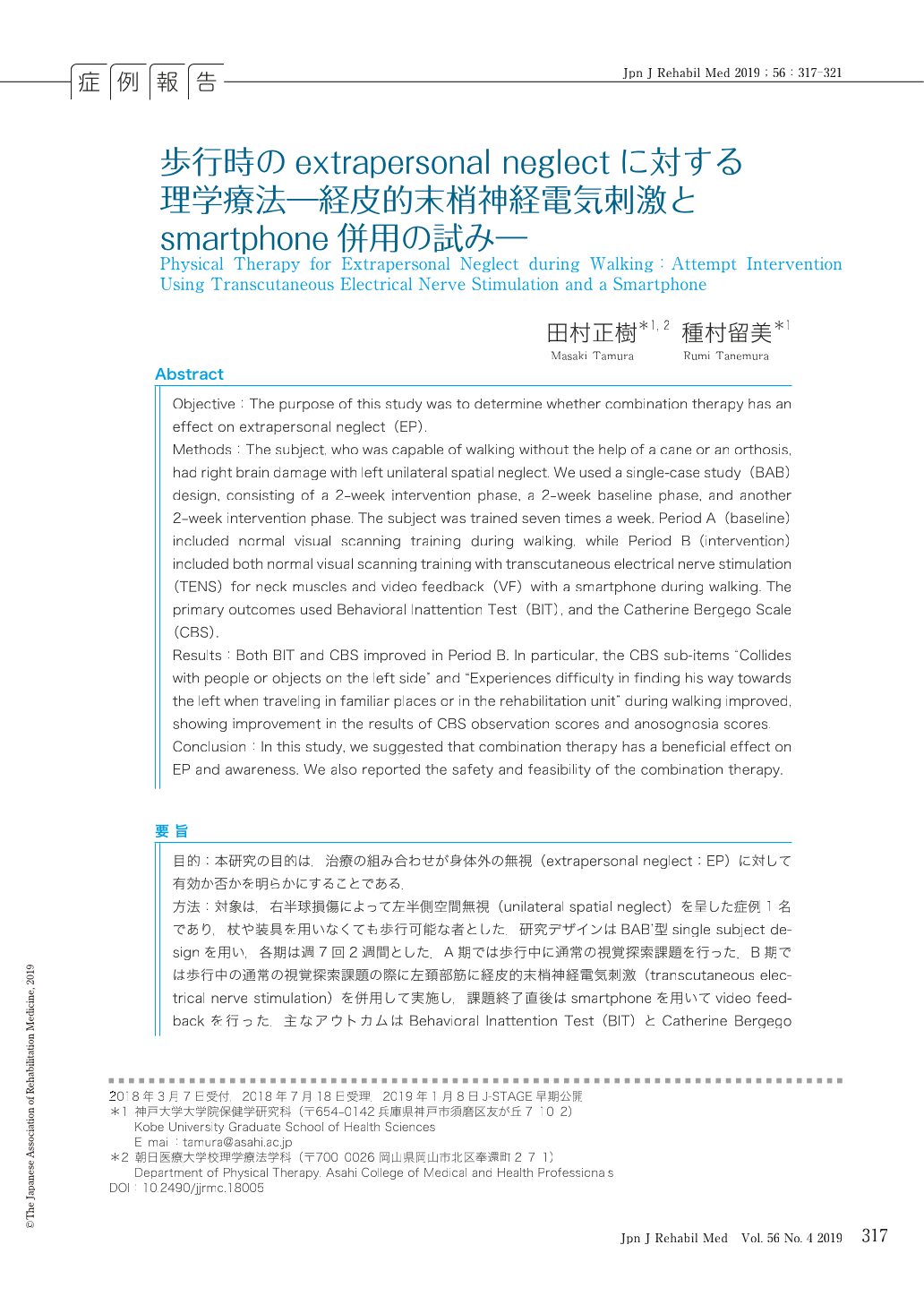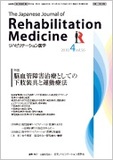Japanese
English
- 販売していません
- Abstract 文献概要
- 1ページ目 Look Inside
- 参考文献 Reference
要旨
目的:本研究の目的は,治療の組み合わせが身体外の無視(extrapersonal neglect:EP)に対して有効か否かを明らかにすることである.
方法:対象は,右半球損傷によって左半側空間無視(unilateral spatial neglect)を呈した症例1名であり,杖や装具を用いなくても歩行可能な者とした.研究デザインはBAB'型single subject designを用い,各期は週7回2週間とした.A期では歩行中に通常の視覚探索課題を行った.B期では歩行中の通常の視覚探索課題の際に左頚部筋に経皮的末梢神経電気刺激(transcutaneous electrical nerve stimulation)を併用して実施し,課題終了直後はsmartphoneを用いてvideo feedbackを行った.主なアウトカムはBehavioral Inattention Test(BIT)とCatherine Bergego Scale(CBS)を用いた.
結果:B期でBITとCBSが改善した.特に,歩行中のCBSの下位項目である「左側への衝突」と「左側へ曲がることの困難」の観察評価と病態失認の得点に改善を認めた.
結論:治療の組み合わせはEPと気づきに対して有効であることが示唆された.
Objective:The purpose of this study was to determine whether combination therapy has an effect on extrapersonal neglect (EP).
Methods:The subject, who was capable of walking without the help of a cane or an orthosis, had right brain damage with left unilateral spatial neglect. We used a single-case study (BAB) design, consisting of a 2-week intervention phase, a 2-week baseline phase, and another 2-week intervention phase. The subject was trained seven times a week. Period A (baseline) included normal visual scanning training during walking, while Period B (intervention) included both normal visual scanning training with transcutaneous electrical nerve stimulation (TENS) for neck muscles and video feedback (VF) with a smartphone during walking. The primary outcomes used Behavioral Inattention Test (BIT), and the Catherine Bergego Scale (CBS).
Results:Both BIT and CBS improved in Period B. In particular, the CBS sub-items “Collides with people or objects on the left side” and “Experiences difficulty in finding his way towards the left when traveling in familiar places or in the rehabilitation unit” during walking improved, showing improvement in the results of CBS observation scores and anosognosia scores.
Conclusion:In this study, we suggested that combination therapy has a beneficial effect on EP and awareness. We also reported the safety and feasibility of the combination therapy.

Copyright © 2019, The Japanese Association of Rehabilitation Medicine. All rights reserved.


